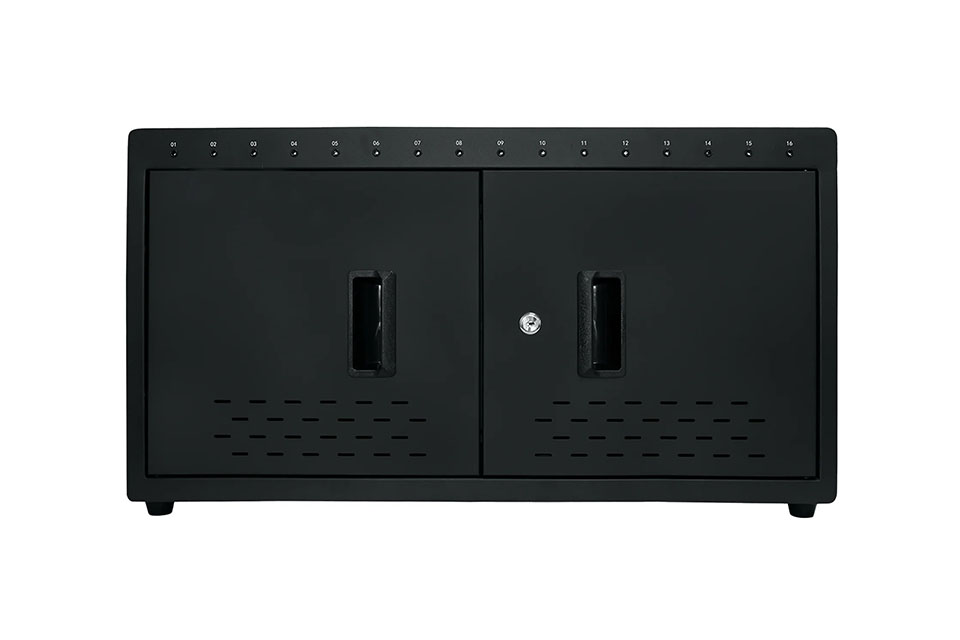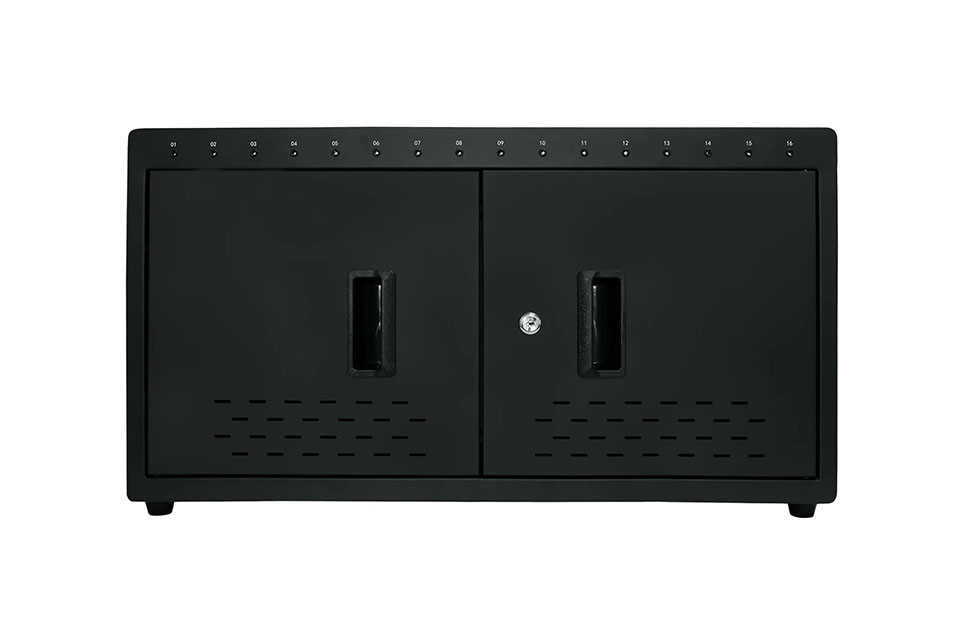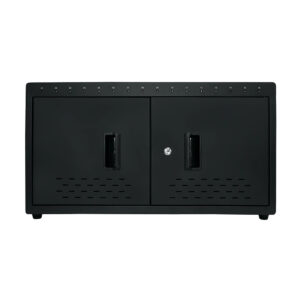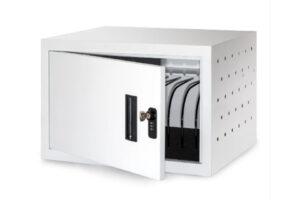Summary
Charging cabinets are specialized enclosures designed to house the essential electrical components for charging electric vehicles (EVs), ensuring safety, efficiency, and reliability in charging operations. These cabinets integrate critical elements such as circuit breakers, wiring, and smart metering systems that enable advanced features, including remote monitoring and billing capabilities. The increasing adoption of electric vehicles and the demand for accessible charging infrastructure highlight the importance of these systems in supporting the transition to sustainable transportation.
Charging cabinets are categorized into three primary levels based on their charging capacity: Level 1, Level 2, and Level 3. Level 1 charging cabinets provide the slowest charging option through a standard 120-volt outlet, making them suitable for residential use. Level 2 cabinets offer faster charging through a 240-volt connection, ideal for both home and commercial settings. Level 3 cabinets, also known as DC Fast Chargers, provide rapid charging capabilities at 480 volts, essential for high-traffic locations. The design and technology within these cabinets not only enhance user experience through intuitive interfaces but also incorporate robust features for effective monitoring and management of charging operations.
The integration of remote monitoring systems within charging cabinets allows operators to track real-time data, ensuring proactive maintenance and efficient energy management. These systems rely on advanced sensors, communication networks, and data analytics to provide valuable insights into charger performance and energy usage, ultimately reducing downtime and enhancing reliability in the EV market. Furthermore, the ability to customize billing processes through Charge Point Management Systems (CPMS) supports diverse pricing models, making charging more convenient and financially viable for users and operators alike.
Despite the advancements, the implementation of remote monitoring and billing features poses challenges such as network reliability, evolving regulatory standards, and cybersecurity risks. As the market for electric vehicles continues to grow, the success of charging cabinets will largely depend on addressing these issues and ensuring seamless interoperability across different charging networks.
Table of Contents
Overview of Charging Cabinets
EV charging cabinets are specialized enclosures designed to house and protect the electrical components necessary for charging electric vehicles (EVs). These cabinets not only serve as protective containers but are also engineered solutions that ensure safe, efficient, and reliable charging. They typically include critical components such as circuit breakers, wiring, connectors, and advanced features like smart metering and user authentication systems, allowing for remote monitoring and management of charging operations.
Types of Charging Cabinets
Charging cabinets are categorized into three primary levels based on their charging capacity:
Level 1 Charging Cabinets
Level 1 charging cabinets are the most basic option, providing charging through a standard 120-volt AC plug, akin to a household outlet. While they are slower, they are suitable for home use or locations where vehicles are parked for extended periods, allowing for overnight or workday charging.
Level 2 Charging Cabinets
Level 2 cabinets utilize a 240-volt AC plug, significantly reducing charging times compared to Level 1 options. These cabinets are versatile and ideal for both residential and commercial settings, including public parking areas and shopping centers, capable of fully charging most EVs within a few hours.
Level 3 Charging Cabinets
Level 3 charging, often referred to as DC Fast Charging, uses a 480-volt DC plug and can charge an EV to 80% in as little as 30 minutes. These cabinets are particularly essential for high-traffic locations such as highway rest stops and urban areas where quick turnaround times are needed, although their higher installation and maintenance costs make them less suited for residential use.
Structural and Design Features
The design and material selection of EV charging cabinets are critical to their functionality and durability. High-quality materials, such as stainless steel, aluminum, and reinforced plastics, are commonly used to ensure resilience against environmental stressors like temperature fluctuations and moisture. Additionally, effective cooling and ventilation systems are integral for maintaining optimal performance, especially in higher-level chargers that manage greater power loads.
User Experience and Ergonomics
A user-friendly interface is a hallmark of modern EV charging cabinets, often featuring touch screens and intuitive controls to enhance the charging experience for first-time users. Ergonomics play a vital role in their design, ensuring that charging ports are accessible to a diverse range of users, complemented by clear signage and efficient cable management.
Remote Monitoring and Management
Many charging cabinets are equipped with advanced remote monitoring systems that allow operators to access real-time data regarding charger health, utility power, and usage analytics. This capability enables efficient condition-based maintenance planning and supports remote troubleshooting, minimizing the need for on-site inspections. Such systems can be integrated with centralized charging management systems (CMS), facilitating oversight of multiple charging stations across various locations.

Remote Monitoring
Remote monitoring plays a crucial role in the management and optimization of energy consumption, particularly in the context of electric vehicle (EV) charging infrastructure. This technology allows for real-time oversight and diagnostics of charging stations, enabling operators to address potential issues proactively and minimize downtime.
Key Components of Remote Monitoring Systems
Sensors and Meters
Smart meters are integral to remote monitoring systems, as they provide real-time measurements of electricity, gas, and water consumption. Additionally, various environmental sensors can track changes in temperature and humidity, which can impact energy usage.
Communication Networks
The sensors and meters connect to a centralized monitoring system via the Internet of Things (IoT) or wireless networks. This connectivity ensures immediate notifications in cases of faults, inefficiencies, or unusual usage patterns, facilitating swift interventions.
Data Analytics
Data analytics is another cornerstone of remote monitoring. Providers utilize advanced technologies to analyze energy usage across multiple facilities, identifying trends and making predictions about future consumption. This information empowers operators to make informed decisions regarding energy management.
Control Systems
Control systems enhance the functionality of remote monitoring by allowing operators to respond to issues from a distance. Automated systems can adjust energy-consuming devices, such as HVAC and lighting, based on real-time data inputs, further optimizing energy use.

Benefits of Remote Monitoring
Predictive Maintenance
One of the significant advantages of remote monitoring is its support for predictive maintenance. By identifying potential issues before they escalate, operators can significantly reduce the costs associated with unexpected equipment failures and maintenance.
Enhanced Efficiency
Operators across various industries—including supermarkets, office buildings, and universities—can benefit from remote monitoring by optimizing their energy consumption. The ability to monitor energy use in real-time enables smarter decision-making and resource management.
Improved Reliability in the EV Market
The importance of minimizing downtime is particularly critical in the EV charging sector. A 2023 study highlighted that users were unable to charge their vehicles 20% of the time due to service interruptions at charging stations. Remote monitoring helps mitigate these issues by allowing operators to diagnose and resolve technical problems without requiring on-site intervention, thereby enhancing overall system reliability.

Billing Capabilities
Charging cabinets equipped with Charge Point Management Systems (CPMS) offer robust billing and payment processing functionalities essential for electric vehicle (EV) charging sessions. These systems allow operators to customize a variety of pricing models, including pay-per-kilowatt-hour, pay-per-minute, flat fees, subscriptions, and dynamic pricing that adjusts based on demand or energy costs. This flexibility is crucial in accommodating the diverse needs of EV users and optimizing revenue generation.
Advanced Billing Features
The advanced features of modern billing solutions extend beyond basic transaction processing. They incorporate real-time rating, dynamic cost factoring, and tax management, which enhance operational efficiency and financial accuracy. Furthermore, billing systems are designed to accept multiple forms of payment, such as credit cards and mobile wallets, ensuring a seamless experience for users while maintaining compliance with the Payment Card Industry Data Security Standard (PCI-DSS). These systems also facilitate automated receipt issuance and comprehensive transaction data access, which aids in financial reporting and performance analysis.
Importance of Customization
Customization plays a significant role in billing capabilities. Operators can set unique pricing strategies tailored to their specific market demands and customer preferences. This capability not only enhances user satisfaction but also allows for more sophisticated tariffing structures, such as time-based rates or demand-based pricing models. Moreover, operators are increasingly encouraged to integrate billing solutions that support interoperability protocols, enabling cross-network charging and improving the overall user experience.

Challenges and Considerations
The implementation of remote monitoring and billing for charging cabinets faces a range of challenges that must be addressed to ensure reliability and user satisfaction.
Network Reliability and Management
One of the primary challenges is maintaining network reliability, especially as the number of electric vehicle (EV) chargers increases. For example, the ESB has highlighted that the challenges faced in developing EV charging infrastructure have evolved significantly since they first partnered with Driivz in 2015. Ensuring a robust network that performs reliably across various jurisdictions is critical to providing a consistent user experience and retaining customer trust. As noted in other industries, rapid expansion can lead to significant service interruptions if not managed properly, which underscores the need for sophisticated Remote Monitoring and Management (RMM) solutions.
Evolving Standards and Compliance
The landscape of regulations governing EV charging is continuously changing, with operators needing to stay informed about new technologies and compliance requirements. Operators face the challenge of integrating advanced features such as wireless charging and vehicle-to-grid systems while ensuring adherence to evolving safety standards. Additionally, regional variations in standards complicate implementation for operators with stations across multiple jurisdictions. Organizations that proactively meet compliance requirements will be better positioned to take advantage of future funding opportunities and policy shifts.
Cybersecurity Risks
As charging cabinets become more connected, they also present increased cybersecurity risks. With more systems integrated for remote monitoring and billing, the potential for cyberattacks rises, prompting regulators to introduce guidelines to protect consumer data and ensure network integrity. Compliance with cybersecurity frameworks such as the NIS2 Directive in the EU is essential for safeguarding sensitive user information and maintaining trust in the charging infrastructure.
Interoperability Issues
Interoperability remains a critical consideration, as the ability of different EVs and chargers to communicate effectively across networks is vital for user convenience. Ensuring that various charging systems can operate seamlessly together is essential, particularly as the market expands with diverse vehicle and charging technologies. The establishment of communication protocols is necessary for standardization, which is increasingly recognized as a crucial factor in fostering widespread EV adoption.
Financial Implications
The costs associated with deploying remote monitoring and billing systems can be significant, especially for small businesses and rural communities that may lack the resources to invest in advanced technologies. However, the potential for increased revenue through improved billing processes and reduced downtime due to proactive maintenance is a compelling incentive. Future funding initiatives and grants aimed at encouraging charger deployment in underserved areas may alleviate some financial burdens and help bridge the infrastructure gap.
Case Studies
Implementation in Multifamily Properties
In the evolving landscape of electric vehicle (EV) adoption, multifamily properties have emerged as critical environments for implementing charging solutions. Case studies reveal how property managers and owners have successfully leveraged EV charging software to enhance the resident experience while managing the complexities of shared charging infrastructure. For instance, a condo development utilized charging software to effectively allocate limited charging spots among residents, streamline billing processes, and ensure equitable access to charging facilities. This approach not only facilitated smooth operation but also increased resident satisfaction and retention.
Commercial Property Applications
Commercial property owners and real estate developers have also recognized the benefits of integrating EV charging stations into their facilities. A shopping mall case study illustrated the implementation of a comprehensive charging management system that enhanced the customer experience while generating additional revenue through charging fees. By offering EV charging as an amenity, the mall attracted more visitors and retained tenants seeking sustainable transportation solutions. The software platform enabled seamless payment processing and usage analytics, thereby optimizing the charging stations’ utilization and operational efficiency.
Real-Time Monitoring and Maintenance
The significance of remote monitoring in managing EV charging infrastructure has been highlighted through several projects. One case study showcased a fleet operator that implemented a remote monitoring system to maintain uptime across multiple charging stations. This proactive approach allowed the operator to monitor charging station performance in real-time, quickly identify issues, and execute maintenance actions without the need for on-site visits. By ensuring high availability and minimizing downtime, the operator improved service reliability and enhanced the overall customer experience.
Community Engagement and Sustainable Development
A notable case study focused on the establishment of charging stations in rural areas, emphasizing the importance of community involvement in the deployment of EV infrastructure. Local partnerships were formed to foster acceptance and understanding of EV technologies, leading to successful installation and usage of charging cabinets in these communities. This initiative not only improved access to EV charging but also promoted sustainable development, showcasing how localized strategies can have a global impact on EV adoption.
Through these case studies, it is evident that the integration of charging cabinets with remote monitoring capabilities is crucial for maximizing operational efficiency, enhancing customer experiences, and supporting the broader transition towards electric mobility.
Future Trends
The future of electric vehicle (EV) charging infrastructure is expected to be shaped by a variety of emerging trends, focusing on enhanced efficiency, user experience, and regulatory compliance.
Increasing Demand for Charging Infrastructure
As the adoption of electric vehicles continues to rise, with projections indicating that EVs could make up nearly a third of new car sales by 2030, the demand for charging stations will surge. This growth necessitates a nearly tenfold increase in available charging infrastructure in the U.S., from approximately 4 million to an estimated 35 million chargers. To meet these needs, energy providers will play a critical role by increasing energy production capacity and optimizing distribution systems.
Advancements in Technology
The integration of advanced technologies into EV charging systems will drive significant improvements in functionality and user experience. Smart Monitoring Systems are anticipated to become standard, enabling real-time diagnostics and remote monitoring capabilities. This technology will help operators detect safety risks proactively, thereby enhancing user protection and compliance with evolving regulatory standards. Furthermore, the incorporation of features like vehicle-to-grid (V2G) systems and wireless charging will introduce new safety considerations and necessitate updates to existing regulatory frameworks.
Regulatory Compliance and Safety
With the rapid evolution of technology, staying ahead of regulatory developments will be crucial for operators. Compliance with local, national, and international standards can complicate the design and implementation of charging stations. As the market grows, operators will need to keep abreast of these evolving standards and adapt their practices accordingly to ensure safety and efficiency in their operations.
Community Engagement and Sustainable Practices
Sustainable practices will also become a key focus as communities push for more accessible and affordable EV charging solutions. Engagement with local stakeholders, including partnerships with non-profits and community organizations, will be vital in promoting the widespread adoption of EV charging infrastructure. This approach not only supports sustainable practices but also enhances community acceptance of charging facilities.
Integration with Smart Grid Technologies
The future of EV charging will likely involve greater integration with smart grid technologies. This integration facilitates dynamic load management and real-time communication between charging stations and the electrical grid, optimizing the use of renewable energy sources. By leveraging smart grid capabilities, operators can ensure a more efficient distribution of energy and improve the overall reliability of EV charging services.

















